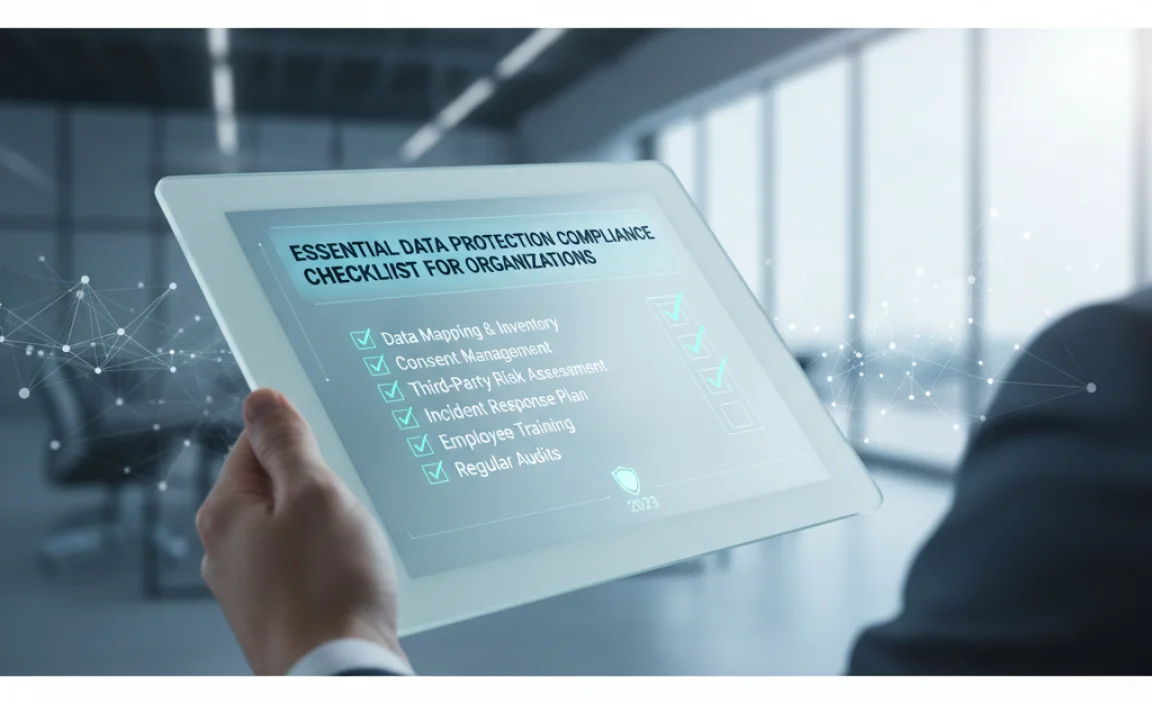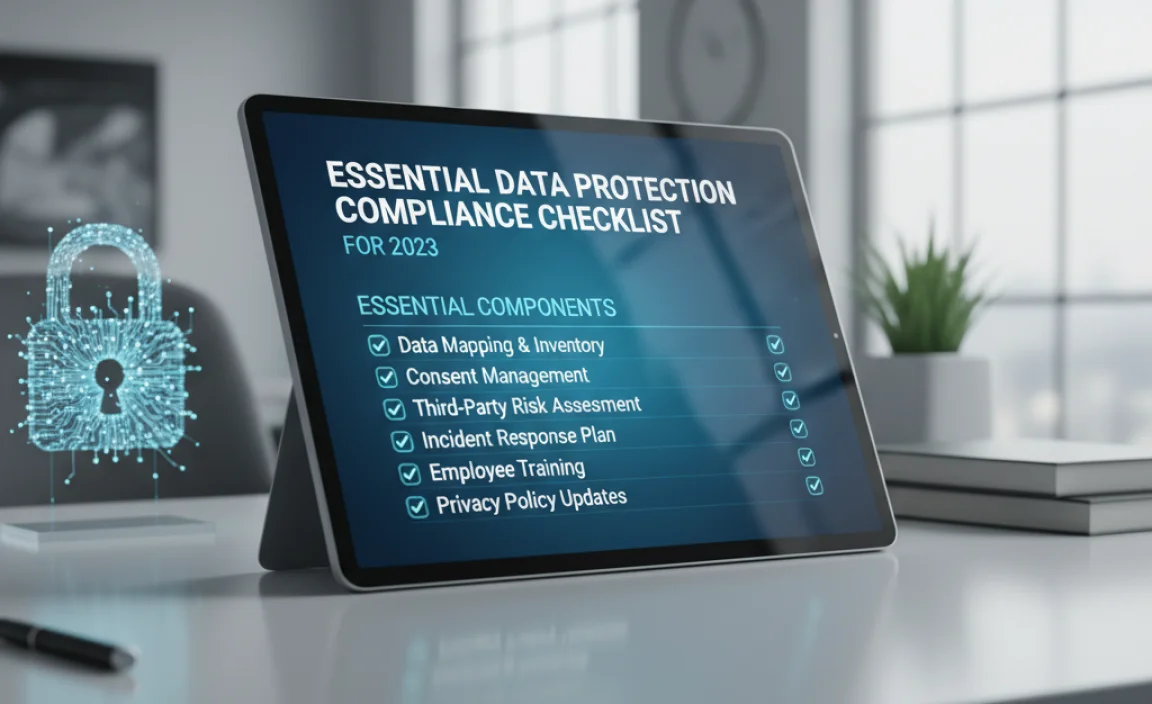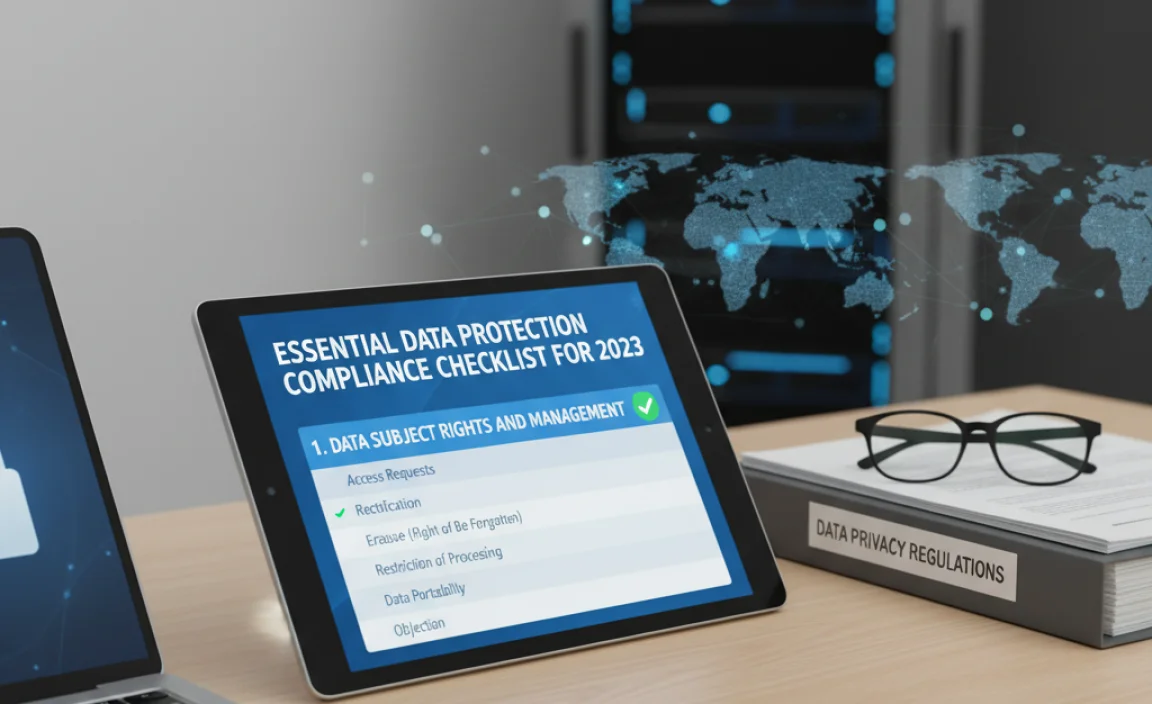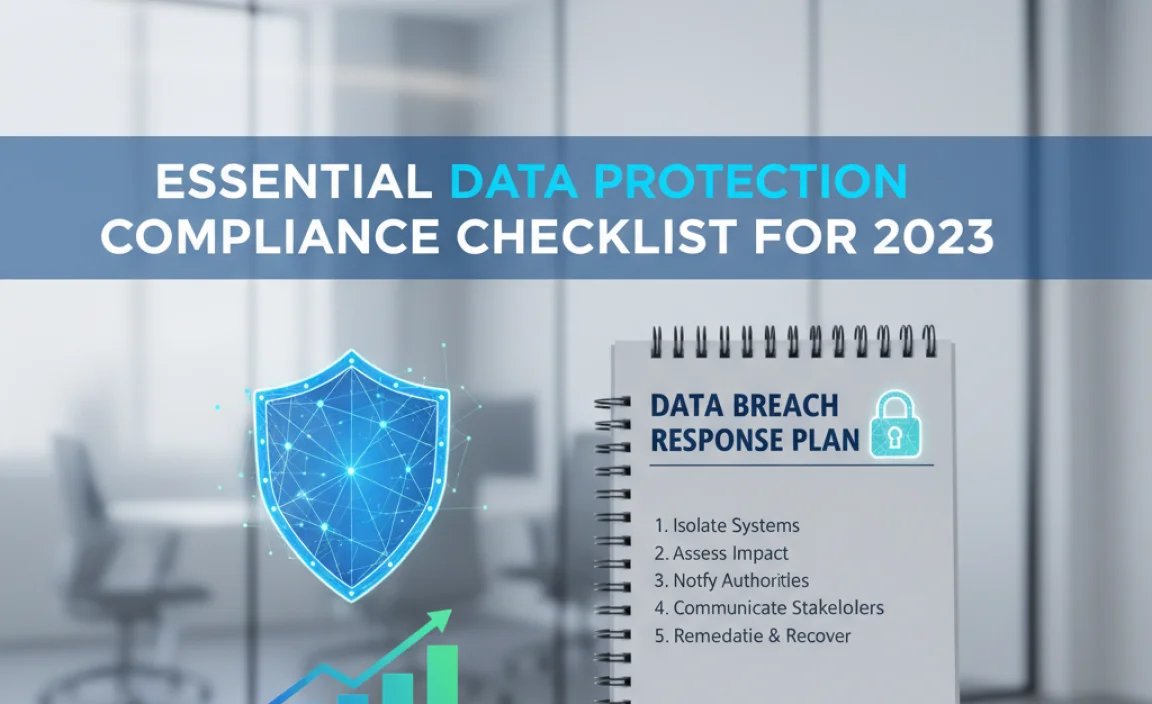Have you ever wondered how companies keep your personal information safe? Data protection is super important today. With so much information shared online, it can feel a bit scary. Luckily, businesses use a data protection compliance checklist to help them stay safe.
This checklist is like a guide. It helps organizations know what rules they should follow. Imagine going on a treasure hunt. You wouldn’t want to miss any clues! This checklist makes sure no important steps are left out.
Did you know that many people worry about their data without even realizing it? They might think their information is private, but there are many ways it can get misused. Understanding compliance can change this. It empowers you to protect your personal data.
In this article, we will explore what a data protection compliance checklist looks like. You’ll discover tips and tricks to help make your information safer. Are you ready to dive in and learn how to keep your data protected?
Essential Data Protection Compliance Checklist For Organizations

A data protection compliance checklist helps businesses keep their data safe. It includes steps like identifying personal data, setting up access controls, and regularly training staff. Did you know that failing to protect data can lead to heavy fines? By following this checklist, companies can avoid risks and build trust with customers. Implementing these simple measures can make a big difference in securing sensitive information. Curious about what else to include? The checklist is your guide to staying compliant and safe.
Essential Components of a Data Protection Compliance Checklist

Data inventory and classification. Privacy policy and consent mechanisms.
Every good data protection compliance checklist needs some vital parts. Start with a data inventory and classification. This means knowing what data you have and sorting it like a sock drawer—no more mismatched pairs! Next, create a clear privacy policy and consent mechanisms. Make it easy for people to understand what you’re doing with their data. After all, nobody wants to sign a contract that sounds like a wizard’s spell, right?
| Key Components | Description |
|---|---|
| Data Inventory | List all data types you handle. |
| Classification | Sort data by sensitivity levels. |
| Privacy Policy | Outline how data is used. |
| Consent Mechanisms | Get clear permission from users. |
Risk Assessment and Management

Identifying data protection risks. Implementing risk mitigation strategies.
Every business faces data protection risks. Identifying these risks is step one. Look for weak spots like outdated software or lost devices. Ignoring them is like leaving your front door open! Once you spot these risks, it’s time to act. Implement strategies to reduce them. Regular training for employees and strong passwords are great starts. And remember, even superheroes need sidekicks—consider a compliance checklist your trusty sidekick!
| Risk | Mitigation Strategy |
|---|---|
| Outdated software | Regular updates |
| Lost devices | Remote wiping technology |
| Weak passwords | Strong password policies |
Data Subject Rights and Management

Rights of individuals under data protection laws. Procedures for handling data subject requests.
Individuals have important rights under data protection laws. These rights include access to their data, correction of errors, and even deletion of information. Think of it as your right to call the shots about what happens to your personal info—like being the director of your own movie! 🎬
To handle requests smoothly, organizations should have clear procedures in place. Here’s a quick view of what to consider:
| Step | Description |
|---|---|
| 1 | Verify the identity of the requester. |
| 2 | Respond within the legal timeframe. |
| 3 | Provide clear and accurate information. |
Remember, being proactive about these rights not only keeps individuals happy but also builds trust. And who doesn’t want to be a trust-building superstar? 🌟
Data Breach Response Plan

Steps to create an effective data breach response plan. Importance of training and awareness for employees.
Creating a data breach response plan is like planning a surprise party—except the surprise is a security panic! First, identify who will handle the crisis. Next, outline steps to contain the breach. Remember, time is of the essence! Training staff is crucial. They need to know their roles. A well-informed team can turn chaos into calm. Regular drills help keep everyone sharp and aware. Lastly, communicate clearly with everyone involved, because even in a crisis, a little humor can lighten the mood!
| Steps for Response Plan | Employee Training Importance |
|---|---|
| 1. Identify and Assemble Team | Training builds confidence. |
| 2. Contain the Breach | Aware employees spot threats. |
| 3. Assess Impact | Knowledge helps in quick decisions. |
| 4. Notify Affected Parties | Clear communication maintains trust. |
| 5. Prevent Future Breaches | Ongoing training enhances skills. |
Remember, a good plan can make a world of difference. Like a superhero, your organization can be prepared to save the day!
Documentation and Record-Keeping
Key documents to maintain for compliance. Best practices for recordkeeping.
Keeping track of important documents is vital for staying compliant. Key records include data processing agreements, privacy policies, and consent forms. These help show that you are serious about protecting data! Best practices suggest organizing files neatly and regularly updating them. An easy way to track everything is to use a checklist. Otherwise, you might end up with a ‘jungle’ of papers!
| Document Type | Purpose |
|---|---|
| Data Processing Agreements | Show how data is managed |
| Privacy Policies | Explain user data rights |
| Consent Forms | Get permission to use data |
Ongoing Compliance Monitoring and Audits
Setting up regular compliance audits. Tools and resources for compliance monitoring.
Regular compliance audits are key to keeping your data safe. Think of them like check-ups for your data health! Schedule these audits every few months to catch any issues early. Use tools like automated trackers to monitor compliance. They work while you snooze! Here’s a handy table of popular compliance monitoring tools:
| Tool Name | Features | Best For |
|---|---|---|
| OneTrust | Easy to use; great for tracking | Large businesses |
| DataGuard | Simple dashboard; alerts | Small to medium businesses |
| Auditoria | Automated reports; user-friendly | All business sizes |
Using these tools helps make audits less of a chore. Stay organized and compliant. Remember, a little humor can lighten the audit mood: “Why did the data go to therapy? It had too many issues!”
Employee Training and Awareness Programs
Importance of employee training in data protection. Designing effective training programs.
Training employees on data protection is crucial. It helps them understand how to keep information safe. This awareness reduces the chances of data breaches. Training should be engaging and informative. Effective programs can include:
- Interactive workshops
- Fun quizzes
- Real-life examples
A strong training program builds a culture of data safety at work.
Why is employee training important in data protection?
Employee training is essential for protecting data because informed workers can spot risks and avoid mistakes.
How to design effective training programs?
Effective training programs should blend various methods like videos, discussions, and hands-on practice to keep employees engaged.
Leveraging Technology for Compliance
Tools and software that aid in compliance. Role of automation in maintaining data protection compliance.
Technology plays an important role in keeping data safe. Special tools and software help businesses meet rules for data protection. These tools can track access and manage data easily. Automation also helps. It can remind staff to follow rules and auto-check for mistakes. Here’s how technology aids compliance:
- Software that monitors data usage
- Tools for secure storage of files
- Automatic alerts for data breaches
- Cloud services that keep data protected
Using these tools keeps everyone informed and reduces errors, making compliance simpler.
How does automation help?
Automation helps by streamlining tasks and keeping data protection on track. It makes routine checks easier and ensures important work gets done. This saves time and effort for everyone involved.
Conclusion
In summary, a data protection compliance checklist helps you stay organized and safe with personal information. It guides you through important steps like understanding laws, securing data, and training your team. You can protect yourself and others by following these steps. For more tips, you can read further or create your own checklist today. Start taking action now!
FAQs
Here Are Five Related Questions On The Topic Of Data Protection Compliance Checklist:
Sure! A data protection compliance checklist is a list of rules we follow to keep information safe. It helps us remember what we need to do. You should always protect personal information, like names and addresses, from getting lost or stolen. We need to train everyone on our team about these rules. Following this checklist helps us keep trust with everyone who shares their information with us.
Sure! Just give me the question you want help with, and I’ll provide a clear and simple answer for you.
What Are The Key Components That Should Be Included In A Data Protection Compliance Checklist For Organizations Handling Personal Data?
To protect personal data, your checklist should include a few key points. First, make sure you know what personal data you have. Second, check that you have permission to use this data. Third, protect the data by keeping it safe and secure. Fourth, teach everyone in your organization about data privacy rules. Lastly, have a plan for what to do if there is a data breach.
How Can Businesses Assess Their Current Level Of Compliance With Data Protection Regulations, Such As Gdpr Or Ccpa?
Businesses can check if they follow data protection rules like GDPR (General Data Protection Regulation) or CCPA (California Consumer Privacy Act) by doing a few things. First, we can create a checklist of the laws. Then, we review our current practices to see if they match. We can also ask for help from experts who know these laws well. Lastly, we should keep updating our practices as rules may change.
What Steps Should Organizations Take To Ensure That Employees Are Trained And Aware Of Data Protection Compliance Requirements?
To keep everyone safe, we need to train employees on data protection. First, we should give clear lessons on what data protection means. Next, we can use fun games or quizzes to help everyone remember the rules. It’s also important to share updates and reminders often. Lastly, we should encourage questions so everyone feels comfortable asking for help.
How Often Should A Data Protection Compliance Checklist Be Reviewed And Updated To Reflect Changes In Legal Requirements Or Organizational Practices?
You should check your data protection checklist at least once a year. If there are big changes in the law or how your organization works, update it right away. This helps keep everyone’s information safe. Regularly reviewing ensures you follow the rules and protect people properly.
What Are The Potential Consequences For Organizations That Fail To Comply With Data Protection Regulations Outlined In Their Compliance Checklist?
If an organization does not follow data protection rules, it can face big problems. They might get fined, which means paying a lot of money. Their reputation can also suffer, making people trust them less. Customers may leave and choose other businesses instead. This can hurt the organization in many ways, leading to serious issues.



